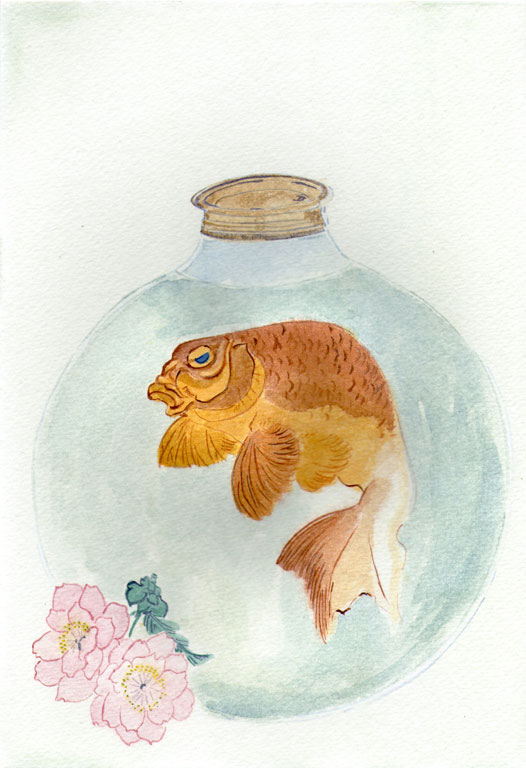Gold-Fish in a Glass Bottle by Totoya Hokkei (Japanese, 1780–1850).
Hokkei was originally a fishmonger. After studying Japanese painting with Kano Yosen, he became a pupil of the great master Katsushika Hokusai. Hokkei specialized in surimono (woodblock prints privately commissioned by poetry circles of the wealthy and educated citizens of Edo (Tokyo).
He also created book illustrations. Books in old Japan were produced with the same woodblock technique as single sheets.
In Japan, goldfish is a symbol for peace and fortune due to it being coloured and therefore signifying wealth.
Starting in ancient China, various species of carp have been domesticated and reared as food fish for thousands of years. Some of these normally gray or silver species have a tendency to produce red, orange or yellow color mutations; this was first recorded in the Jin Dynasty (265–420).
In 1603, goldfish were introduced to Japan, where the Ryukin and Tosakin varieties were developed. In 1611, goldfish were introduced to Portugal and from there to other parts of Europe.
During the 1620s, goldfish were highly regarded in southern Europe because of their metallic scales, and symbolized good luck and fortune. It became tradition for married men to give their wives a goldfish on their one-year anniversary, as a symbol for the prosperous years to come. This tradition quickly died, as goldfish became more available, losing their status.
Link:
http://www.metmuseum.org/Collections/search-the-collections/55067
